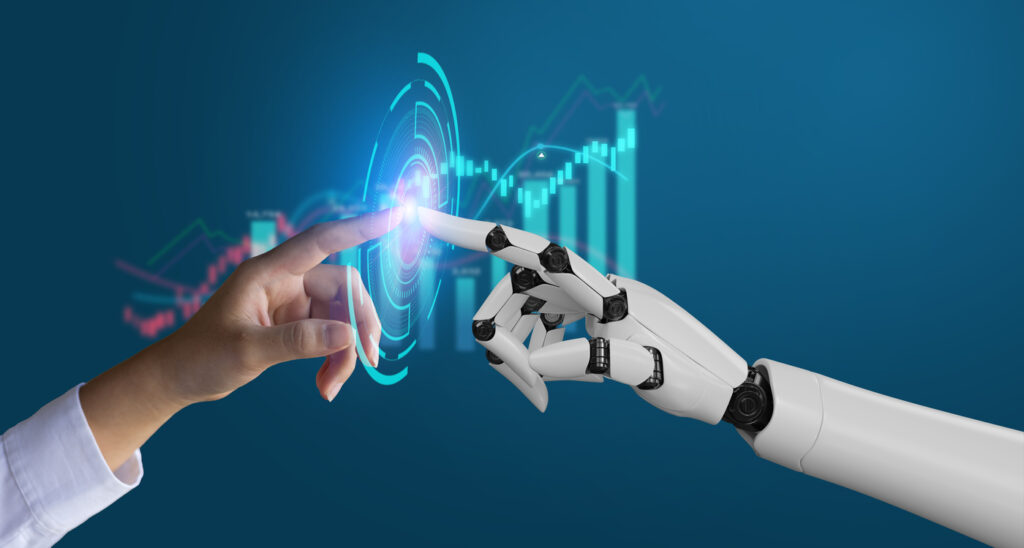Content Generation Hazards with AI
Content Generation Hazards with AI

In today’s digital landscape, using artificial intelligence (AI) in content generation has become increasingly prevalent. AI has revolutionized various industries, including marketing and advertising. It offers numerous benefits, such as increased efficiency, faster production, and improved targeting. However, AI content creation comes with hazards and challenges, like any technology. This article will explore the potential hazards of AI-generated content and discuss ways to mitigate them effectively.
Understanding AI-Generated Content
Before delving into the hazards associated with AI-generated content, it is essential to understand how AI algorithms create content. AI-powered systems employ natural language processing (NLP) techniques and machine learning algorithms to analyze vast amounts of data and generate text that mimics human writing. These algorithms learn from existing data to produce coherent and contextually relevant content.
Hazards of AI-Generated Content
Lack of Creativity and Originality
One of the primary hazards of AI-generated content is the potential lack of creativity and originality. While AI algorithms excel at analyzing data and identifying patterns, they often struggle to generate genuinely innovative ideas or produce unique and compelling content. This can lead to a significant challenge when it comes to creating content that stands out in a crowded digital landscape.
Tone and Voice Inconsistency
Another hazard of AI-generated content is the inconsistency in tone and voice. AI algorithms may produce content that lacks a consistent brand voice or fails to align with the desired tone for a specific piece of content. This can result in a disjointed and confusing user experience, making it difficult to establish a strong brand identity and effectively connect with the target audience.
Misinterpretation and Inaccuracy
AI algorithms heavily rely on the data they are trained on. If the training data contains biased or inaccurate information, it can generate content that perpetuates those biases or spreads misinformation. This hazard poses a significant risk when it comes to creating content that is objective, unbiased, and factually accurate.
Insensitivity and Offensive Content
AI algorithms may not fully understand or grasp the nuances of cultural sensitivities, current events, or evolving social dynamics. As a result, there is a hazard of generating content that is insensitive or offensive. This can harm a brand’s reputation, lead to public backlash, and negatively impact the overall user perception.
Lack of Emotional Intelligence
One crucial aspect of effective content creation is the ability to evoke emotions and establish a connection with the audience. AI-generated content often lacks emotional intelligence, as algorithms struggle to replicate human empathy and understanding. This can result in content that feels robotic, detached and fails to resonate with readers on a deeper level.
Mitigating the Hazards

While the hazards associated with AI-generated content are significant, they can be effectively mitigated through a combination of human oversight and strategic processes. Here are some key strategies to consider:
Human Review and Editing
Introducing a human review and editing process can help identify and rectify any issues with AI content generation. Skilled copywriters and editors can add a human touch, ensure consistency in tone and voice, eliminate offensive or insensitive content, and infuse creativity and originality where needed. This collaboration between AI and human expertise can enhance the overall quality and effectiveness of content.
Diverse and Balanced Training Data
To minimize the risk of biased or inaccurate content generation, it is crucial to provide AI algorithms with diverse and balanced training data. This data should be carefully curated to include a wide range of perspectives, ensuring a fair representation of various demographics and minimizing the potential for perpetuating biases.
Continuous Algorithm Monitoring and Improvement
AI algorithms should be continuously monitored to identify any potential hazards or inaccuracies. Regular assessments, feedback loops, and updates to the algorithms can help improve their performance and mitigate risks. By prioritizing ongoing improvement, organizations can ensure that the AI-generated content aligns with their desired goals and values.
The Future of AI and Content Creation

As AI technology continues to advance, it is crucial for organizations to stay informed and adapt their content generation strategies accordingly. AI is not a replacement for human creativity and intuition but rather a powerful tool that can enhance the content creation process. By combining the strengths of AI algorithms with human expertise, organizations can create compelling, engaging, and authentic content that resonates with their audience.
In conclusion, while AI-generated content offers numerous advantages, it is essential to be aware of the hazards and challenges it presents. By understanding these hazards and implementing effective strategies to mitigate them, organizations can harness the power of AI while maintaining the integrity and quality of their content. Embracing a collaborative approach that combines AI algorithms with human creativity and expertise will pave the way for the future of content creation, where technology and human ingenuity work hand in hand.
Remember, when leveraging AI-generated content, it is vital to balance efficiency with the need for human oversight, ensuring that the final output is professional, engaging, and aligned with the brand’s values and objectives.
Red Crow Content Generation Assistance
While AI is a relatively new tool that is ever-evolving, Red Crow Marketing always stays on top of potential content creation tools. We have discovered a number of tools and techniques that can benefit our clients. Whether pursuing new types of content or utilizing AI tools to reduce the time and cost of projects, there are a number of places where AI can be used to improve workflows and projects for your business. If you would like to learn more about how an agency can use AI to assist your business, contact us today!
FAQ
AI-generated content refers to text or written material created by artificial intelligence algorithms. These algorithms utilize natural language processing (NLP) techniques and machine learning to analyze data and produce text that mimics human writing.
The hazards of AI-generated content include:
- Lack of creativity and originality.
- Inconsistency in tone and voice.
- Misinterpretation and inaccuracy.
- Insensitivity and offensive content.
- Lack of emotional intelligence.
While AI algorithms excel at analyzing data and identifying patterns, they often struggle to generate truly innovative ideas or produce unique and compelling content. This can result in content that fails to stand out in a competitive digital landscape.
AI algorithms may produce content that lacks a consistent brand voice or fails to align with the desired tone for a specific piece of content. This can lead to a disjointed user experience and difficulties in establishing a strong brand identity.
AI algorithms heavily rely on the training data they receive. If the data contains biases or inaccuracies, it can generate content that perpetuates those biases or spreads misinformation. This poses a risk to objective, unbiased, and factually accurate content creation.
AI algorithms may struggle to grasp cultural sensitivities, current events, or evolving social dynamics. Consequently, there is a risk of generating content that is insensitive or offensive, potentially harming a brand’s reputation and eliciting negative public reactions.
AI algorithms struggle to replicate human empathy and understanding, which are crucial aspects of evoking emotions and establishing a connection with the audience. This can result in content that feels robotic, detached and fails to resonate on a deeper level.
Organizations can mitigate these hazards through:
- Implementing human review and editing processes.
- Providing diverse and balanced training data.
- Continuously monitoring and improving AI algorithms.
Human oversight, including skilled copywriters and editors, can add a human touch to AI-generated content, ensuring consistency, eliminating offensive or insensitive content, and infusing creativity and originality where needed.
Yes, by continuously monitoring AI algorithms, organizations can identify hazards, gather feedback, and make updates to improve their performance. Ongoing improvement ensures that AI-generated content aligns with the organization’s goals and values.
No, AI is not a replacement for human creativity and intuition. It is a powerful tool that can enhance the content creation process. Combining AI algorithms with human expertise allows organizations to create compelling, engaging, and authentic content that resonates with their audience.
Organizations should strike a balance by leveraging the efficiency of AI-generated content while ensuring the need for human oversight. This ensures the final output is professional, engaging, and aligned with the brand’s values and objectives.
